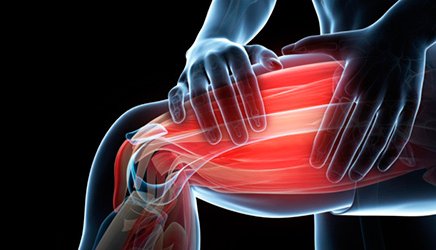Laurie's Blogs.
Apr 2017
The Lactic Acid Lies
By Laurie Edge-Hughes, BScPT, MAnimSt(Animal Physio), CAFCI CCRT

We’ve all heard the lactic acid lies! Chances are good you may have even repeated them even! What we believed lactic acid was and did isn’t at all true. In the mid 2000’s Lactic Acid was the ‘bad guy’. By 2010, we knew it wasn’t Lactic Acid, but instead Lactate. And by 2015, we were grasping the concept that it’s a good thing and a fuel source. If you’re not yet up to speed on the Lactic Acid Lies, better keep reading!
The List of Lies:
1. Muscle don’t produce lactic acid, they produce lactate. (“PoTAYto”, “PoTATTo”, right?) Lactate is an intermediate link between anaerobic an aerobic metabolism… not a waste metabolite
2.Lactate does not cause muscle fatigue by making muscle too acidic to contract. Conversely, it actually helps reduce fatigue by mitigating the effects of ‘depolarization’. Depolarization occurs with intense exercise.
3.Lactate does not cause post-exercise muscle soreness. Post-exercise muscle soreness is actually caused by simple mechanical damage to muscle fibers, free radical damage, and inflammation.
4.Exercise performance is not impeded by lactate. In fact, lactate production can stimulate the biogenesis of mitochondria in the muscles, and mitochondria are the little factories that produce energy (remember the Krebs cycle?).
5.Lactate is not a waste product. 75% of the lactate produced in muscles cells is metabolized aerobically and used directly as fuel for muscle contractions, and 25% is recycled into the bloodstream and converted to glucose that can be utilized by the brain, heart, and muscles.
6.Better athletes do no produce less lactate. That simply doesn’t make sense in light of what we’ve already learned. Yes, there is less measureable lactate in the blood stream in elite athletes, but it is more likely that those athletes use 85% for muscle contractions and only release 15% to the blood stream!
Endurance training in particular stimulates the adaptation to use more lactate during activities, and to use it more efficiently. In trained subjects, lactate is actually a preferred energy substrate over glucose… which is great, because when you use up your glucose stores, they’re much harder to replenish!
Last year I attended the Orthopaedic Division Symposium (at the Canadian Physiotherapy Association’s Congress), and was blessed to listen to Delia Roberts, PhD, FACSM speak on ‘Metabolic Considerations for Training Program Design’. She was a great speaker, and very knowledgeable! One thing she had stated, as it pertains to Lactate, is that whenever she is reviewing or looking at a new textbook on exercise physiology, she discards or discredits the book if they have a chapter devoted to “Lactic Acid”. She too reiterated that lactate is not bad and is a fuel source. We should be ‘talking smack’ about hydrogen instead. Hydrogen causes acidosis.
Okay… so now you know, you can ease up on poor old Lactate. It’s been trying to help you out for years, but only just recently is getting the credit it deserves. What is really causing your muscle soreness? Well that’s a blog for another day!
References:
1. http://running.competitor.com/2014/01/training/six-lies-you-were-taught-about-lactic-acid_29432/7
2. http://www.runnersworld.com/sweat-science/three-reasons-to-love-lactate
3.Delia Roberts: Metabolic Considerations for Training Program Design. Presentation at the Ortho Division Symposium, May 26 2016, Victoria, British Columbia, Canada.


